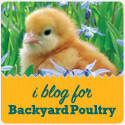HOW TO GROW, HARVEST AND USE:
Chicken Coop Chatter©
Chia is a member of the Salvia family (ie: Sage), and though just a tiny seed, it is highly nutritional , high in protein, and omega-3 fatty acids that can be added to virtually anything while cooking, baking or add to yogurt, granola, or your favorite beverages. I recommend Chia seeds to anyone homesteading or for those stocking the pantry, for it's longevity (virtually no limited shelf life) and it's high nutritional value. As with anything, use in moderation in the event of some allergic reaction, until you know you have no side effects. Note, that there are none, or few minor side-effects for the majority of people. This precaution should be used with any herb or consumable product.
Suddenly Chia seems to be a fad for the health conscious, however it has been around a very long time and though healthy for you, as with all fads it will fall along the wayside as Flax, Wheat germ and others I've seen over the years.
Chia isn't just about some silly looking pottery that grows hair or a beard. It is an ancient seed, that native Indians depended upon for it's nutritional value and high energy. Carbon tests have been taken of chia around ancient sites and dated back at least 600 years, along the west and Northwest boundaries of the United States. It was a staple item used much like wheat. When wheat was introduced, the chia seeds; whole or ground, were added to it for the fry breads, tortillas and mush or porridge, soups and stews. Chia seeds were taken on long journeys or hunting trips and chewed or held in the mouth to quench thirst and provide energy for those journeys. Seeds were harvested from the prickly plants by beating, shaking and holding over gathering baskets, they were then shaken through a sieve-like basket to remove the hulls and plant debris. The chia seed was used crushed into a powder, as well as whole.
The chia seed is mucilaginous, has virtually no taste of it's own, so it can be used to thicken soups, smoothies and broths. You must keep Chia seed dry unless you are using it. A mason jar or other glass container with a tight fitting lid is the best way to store it for kitchen use. You do not need recipes to use the chia seeds or the sprouts you can grow from those seeds, however there are recipes available. Add it to anything, generally a couple teaspoonfuls is enough for thickening a large pot of soup, but you can experiment to get the consistency you prefer. The sprouts can be added to salads, beverages or eaten raw and can be roasted. In addition, Chia makes a good nutritional and healthy fodder for chickens that are not able to free-range or during winter when fodder is scarce.
TO GROW CHIA SPROUTS:
Plastic or disposable container (I used a large cottage cheese container)
Several thicknesses of paper towel or fabric (ie: cheesecloth or batting)
1/2 to 1 teaspoon Chia Seed (white or black)
Water
Chia grows sprouts in low light, so it's an ideal sprout to grow in the regular light of the kitchen. Poke holes in the bottom of the plastic container for drainage. Soak several thicknesses of paper towel, lay in the bottom of container. Sit the container in a tray or paper plate or pie tin to catch water that seeps out. Sprinkle the paper towel with about 1/2 teaspoon of the seeds, approximately 1/8 inch apart (which is virtually impossible, but try to have some space between them). Cover the container with plastic wrap and set aside in a convenient area, where it won't be disturbed, and where the temperature is around 70 degrees. In 4 or 5 days you should see the seeds begin to sprout. Remove the plastic wrap cover and pour about 1/4 cup water in the container, avoid disturbing the sprouting seeds. Set in a window where it will get more light, but not direct sun or high heat.
TO HARVEST: Use alcohol to sterilize your kitchen knife or scissors, snip the sprouted Chia at the base of the stem, just above the growth line or growth medium you are using. Refrigerate (should be dry) or add to salads or beverages. Keep the sprouts moist but not soggy as they continue to grow in your container. Clean the knife or scissors before storing.
FOR CHICKENS: Grow the Chia in shallow containers that chickens can easily access (disposable pie pans work well for this). When the seeds have sprouted and reached an inch or so high, take the entire container to the coop and enjoy watching your chickens graze on this healthy treat.
NOTE: Chia seeds can be purchased online, in bulk food sections (where spices are located), or in health food sections.
In winter months, the sprouts can be snipped, placed in ice cube trays with Olive oil to add to other treats for the extra proteins or tossed into soups and stews. In summer months the sprouts can be snipped and just frozen in water for a cooling and nutritious treat for the chickens.
UPDATE: The Chia sprouts have a very slight hint of mint. Nothing strong tasting, so can be used in salads and on sandwiches without altering the taste.
(To purchase Organic Chia Seeds, see the link below.)
Chicken Coop Chatter© All rights reserved 2011-2016
 RSS Feed
RSS Feed





